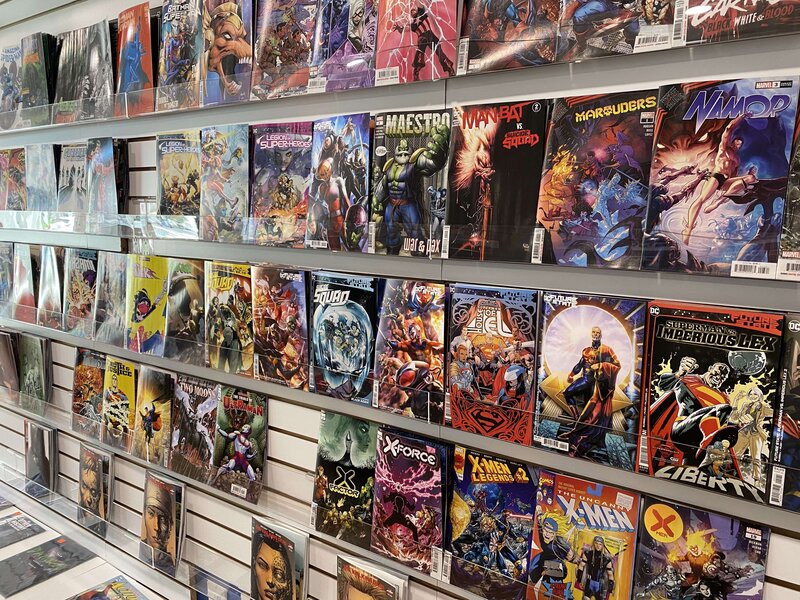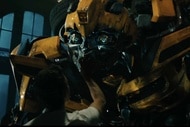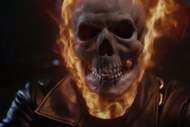Priced Out: At what point do comics become too expensive for fans?

I swear this isn't a column pining for the good old days of 40-cent comics and spinner racks. Really, it's not.
I won't lie, though: I sure do miss the time when a buck got you two comics and change. But I get how inflation works and how rising paper costs can't be ignored. I'm also quite aware that the higher cover prices of today's market have led to creators being able to make a decent living while entertaining us. That benefits the fans, who get to enjoy the great stories that spring from their imaginations.
However, there does come a point where comic books can simply become too expensive for many fans, forcing readers to drop titles not because they don't like reading them, but because they simply can't afford to anymore.
We may be approaching that point.
One of the Big Two publishers, DC Comics, is bumping the price up on some of its monthly titles to $5.99 for a 40-page issue. In its solicitations for June releases, several ongoing series, The Joker #4, Superman Red & Blue #3, Wonder Woman: Black White and Gold #1, and one of the company's flagship books, Batman #109, are all listed with $5.99 cover prices. Think about that for a moment. If someone wanted to read all four of those titles, it would cost about $24 (before tax) to do so. Four comics, $24. That's a big financial hit.
Yes, I'm aware that these comics are 40 pages, but that just means you're getting about 30 pages of actual story. Also, it's not one story. Each of these issues has at least one backup story, which is fine, but I'm sure I'm not the only fan who buys books as much for certain creative teams as for the character. As a Batman fan, I don't want or need a backup story. I personally have never been much for backup stories in ongoing series. If I want an anthology book, I'll buy one of several out on the market, such as the aforementioned WW: Black White and Gold comic.
Consider this...
Both DC and Marvel Comics have almost completely eliminated the $2.99 cover-priced comic. DC has a couple of Scooby-Doo titles at that price, which is a smart move since they target a younger audience. But almost every other comic from the two biggest publishers starts at $3.99. In fact, June solicitations for both DC and Marvel show a bunch of books listed at $4.99, including some that I'm dying to read, like a bunch of the titles around the Heroes Reborn event. I love everything Jason Aaron writes, but everyone has a budget. And that's too many $4.99 comics for me to buy in one month. (For the record, with the exception of a few special releases and some advance PDFs, I do not get free comics.) It's why I skipped King in Black, despite my great interest in that event. There are just too many books to pay for at $4.99 and $5.99 price points. So that means I skip the floppies and wait for the trade.
I'm fortunate to at least be able to make the choice to wait and buy the collected editions. Many others likely can't. That's a shame, as well as a real loss for the industry. As comic book cover prices keep rising, it's not just pricing out those fans who have limited budgets to spend on single issues. It's also going to force fans to stop sampling new product simply because they can't afford it. How in the world can you expect a customer to throw down five or six bucks on a brand new title? Faith and some good advance press can certainly be helpful, but there comes a price point that some fans simply can't afford to meet, and that means taking a risk on an unproven book will become unfeasible.
Who suffers most in that scenario? The creators launching new comics. The economics of creator-owned books are different than the work-for-hire done for publishers such as Marvel and DC. By the nature of the business model of a place like Image Comics, the industry leader in creator-owned comics, the creators keep the bulk of revenues — but continuing to raise the cover price won't necessarily increase your profit if fewer people are buying it.
One of the more anticipated books of 2021 may be Spawn's Universe #1, which kicks off Todd McFarlane's expansion of the universe surrounding his long-running character. That one-shot will be priced at $5.99 for a 52-page comic, which will include a main story and two side tales that will set up future Spawn companion titles. When I talked with him recently, McFarlane pointed out that when his three ongoing spinoff series debut, two of them — The Scorched and King Spawn — will be priced at $2.99, the same as the original Spawn title. The third, Gunslinger Spawn, may be priced at $3.99 due to a higher page count, as it may incorporate a monthly backup story. But McFarlane said holding the line at $2.99 with his other books was imperative.
For a long time, Spawn as well as Brian K. Vaughan and Fiona Staples' Saga have been the only Image books holding their cover price at $2.99. For the Image Comics co-founder McFarlane, that's a decision made with the customer in mind. To him, the price of a comic is an essential and often overlooked factor in whether or not a book breaks out in a very crowded field.
"I don't think people realize how important [pricing is] is in terms of having a successful book," McFarlane says. "I'm going to assume that not everyone has a ton of disposable income. So every time they decide to spend their money, it's a choice. I'm hoping to make it easy for people who are curious to see what is going to happen here with some of these new books, or maybe they're a lapsed Spawn collector or something like that. And they want to maybe try and get back in and sample some of these issues."
To McFarlane, the $2.99 price means a customer can buy one of his titles if they're excited to see the new developments in his flagship character's world, along with at least one other comic for less than $10. "It doesn't cost them a lot, so they can [try] it and decide whether it's for them or not," he says. "I think it matters. I think you have a way higher chance of people picking it up out of curiosity or sampling it if you make the entry point reasonable.”
Not everyone will be negatively impacted by higher prices, of course.
Superstar creators with passionate fanbases can still launch new projects to great success. Donny Cates did it with Crossover (co-created with Geoff Shaw, Dee Cunniffe, and John J. Hill), as did James Tynion IV and Martin Simmonds with The Department of Truth. Both those titles are in the Top 10 of sales orders in March, according to the industry site Comichron.
But what about other promising creator-owned comics with less-pedigreed talent involved? As prices continue to rise, how many sales will those books lose simply because fans can't afford to take a chance on a new series?
I don't pretend to have the answers to this dilemma, and I know there isn't any magical, one-size-fits-all solution. Comics is a tough business under the best of circumstances, and the past year has been anything but ideal. But the people who handle the business side of comics need to understand something that Eisner Award-winning artist David Aja wrote about on Twitter.
The point being, yes, you can try to Band-Aid the problem by simply tacking another dollar on to the cover price. There will always be some fans devoted enough who are financially able to keep buying it. But what's the point of creating art that only a select few can afford to buy? That's not what comics is about, or at least it shouldn't be.
If cover prices keep rising, the industry may pay a price — in terms of lost fans — it may never be able to recover from.





























